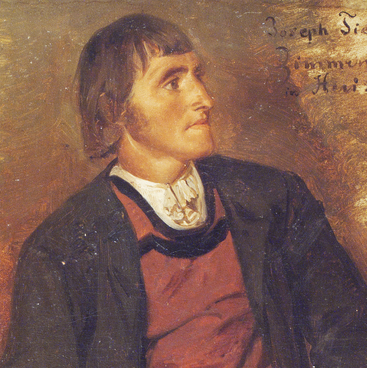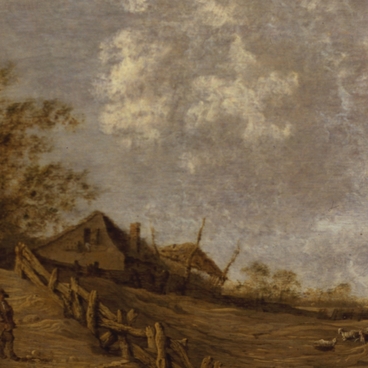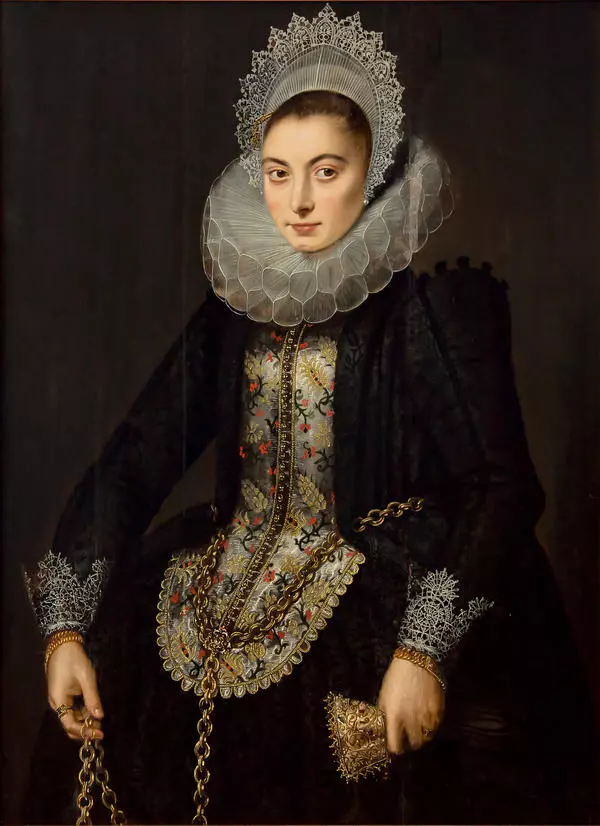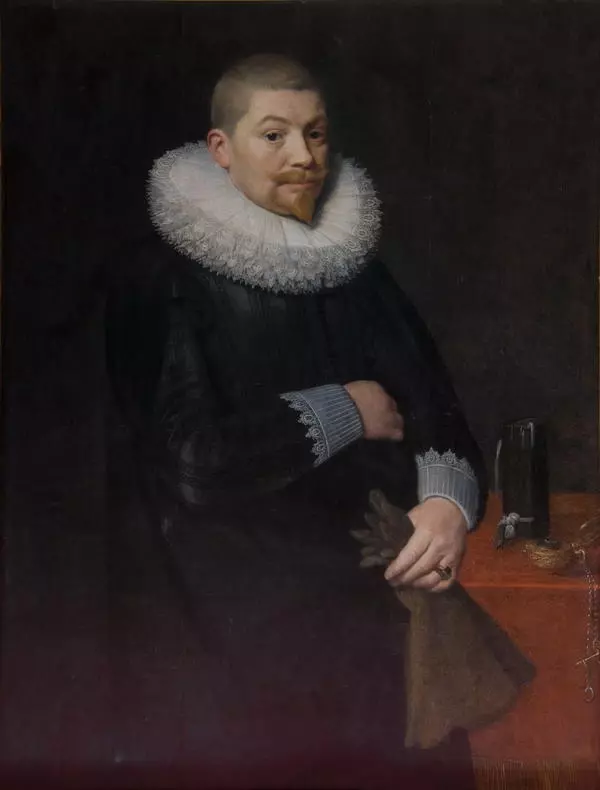In 1927 portraits of an elderly woman and an elderly man were handed over to the Radishchev Museum
from the manor of Otradino belonging to the Orlovs-Kotlyarevskys from the Saratov province. The portraits were considered paired, were ascribed to one painter and were listed in the inventory as the works by an unknown Dutch master. Later, as the records in the publications of the Radishchev Museum indicate, there appeared a version about the authorship of the famous Dutch painter of the 17th century Michiel Jansz. van Miereveld. Michiel Jansz. van Miereveld is a painter and an engraver. He occupied the position of a court painter under the Dutch ruler Prince of Orange-Nassay in the Hague.
The author creates a profound psychological characteristic of the model. Though it was not known until recently who exactly is depicted in the picture, it is obvious, however, that this is an educated man occupying a rather high-ranking position. But later the name of Miereveld was rejected and the works were listed as pieces by an unknown Dutch painter of the 17th century.
from the manor of Otradino belonging to the Orlovs-Kotlyarevskys from the Saratov province. The portraits were considered paired, were ascribed to one painter and were listed in the inventory as the works by an unknown Dutch master. Later, as the records in the publications of the Radishchev Museum indicate, there appeared a version about the authorship of the famous Dutch painter of the 17th century Michiel Jansz. van Miereveld. Michiel Jansz. van Miereveld is a painter and an engraver. He occupied the position of a court painter under the Dutch ruler Prince of Orange-Nassay in the Hague.
The author creates a profound psychological characteristic of the model. Though it was not known until recently who exactly is depicted in the picture, it is obvious, however, that this is an educated man occupying a rather high-ranking position. But later the name of Miereveld was rejected and the works were listed as pieces by an unknown Dutch painter of the 17th century.
In the 1990s the museum organized an engineering and technological research of its collection, including the -paired portraits from the manor of Otradino. It was confirmed that they were indeed painted in Holland in the early 17th century. It was not expected that they were painted by absolutely different masters with an interval of almost twenty years. Some similarity in the painting manner is attributable to the fact that when kept in the collection of the Orlovs-Kotlyarevskys they were apparently restored by the same painter.
Thus, in the portrait of the man one can see correction touch-ups — colour in the face, brushstrokes in the hair and in the beard. The portrait of a woman is still considered the work by an unknown master, while that of the man got back the name of Michiel Jansz. van Miereveld. It is even clear now who is depicted in it. This became possible owing to the fact that the version of the portrait attributed to Miereveld’s studio is in Milan, in Pinacoteca di Brera. On the reverse side there is an inscription in the Dutch language and the date (1630). It says that the man in the picture is Erik Dimmer (1550–1630), a councillor in the ruling house of Princes of Orange. He is known to have served under Prince Maurits and his successor Prince Frederik Hendrik.
Erik Dimmer’s daughter Johanna in 1632 married the Italian Taddeo Vico who later became President in Milan and Florence. It was she who brought her father’s portrait to Italy. The portrait of Mr.Dimmer is fully identical to the Portrait of a Man from the Radishchev Museum, which also gives reasons to attribute it to Miereveld’s studio. Apparently, both portraits were executed simultaneously. Possibly, the portrait from the Radishchev Museum was acquired by the family representatives of the Orlovs-Kotlyarevskys in Italy which they had visited a number of times.





